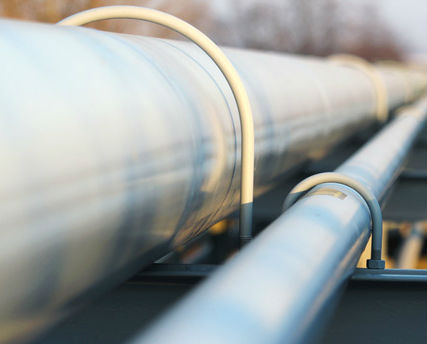Day Of Reckoning for US Shale Will Have To Wait

October has been billed as a pivotal month in which indebted shale companies would see their credit lines cut, precipitating a faster consolidation in the industry that would sow the seeds of a rebound.
But banks appear to be taking a more lenient approach than expected. A new Jeffries report said only $450 million in borrowing bases have been cut, across more than 20 companies. That amounts to just 2% of available credit lines, much lower than the 15% reduction expected by analysts. In other words, banks are allowing drillers to continue to borrow, which could delay the inevitable balancing needed in the market.
The possibility of a wave of bankruptcies could be put on hold, after banks have been “surprisingly gentle,” as Jeffries put it in their report.
That doesn’t necessarily mean that indebted shale companies can right the ship. It may just delay the adjustment for oil markets.
“It looks generally to me like it’s sort of kick the can down the road approach that’s being taken at this point but that really just pushes the day of reckoning into sort of the first quarter of next year,” Dave Lesar, Halliburton chairman and CEO, told investors on Oct. 19 when reporting quarterly earnings.
In fact, Jeffries sees the spring of 2016 as a more critical deadline for struggling drillers hoping to keep their credit lines open. “We think that banks are generally giving producers more time to improve financial health and that spring ’16 re-determinations could be much tougher without significant commodity price improvement,” said Jonathan Wolff, an analyst with Jeffries, according to SNL.
It is not a total win for the companies that are trying to hang on. Maintaining access to finance can come at a price. Jeffries expects that companies will have to offer up more collateral or agree to more restrictive covenants.
Furthermore, Jeffries says that a large volume of high-yield bonds will mature in the coming years, raising the likelihood that refinancing will be needed. Bond markets have essentially been ruled out as a new source of finance for high-yield producers. That means that credit lines with lending institutions become the last resort. E&P companies could resort to loans in order to pay off maturing debt, not unlike charging one credit card to wipe clean the debt on another.
Still, in the short-term, the leniency from lending institutions could delay what many had hoped would be the start of a rebound. Kicking the can means that production may not fall as fast as expected, which will mean oil prices may not begin to stage a rally as quickly as some had hoped.
Moody’s Investors Service sees the contraction as too little to make a significant dent in the global supply gut. The ratings agency cut its forecasted oil price for 2016 to just $48 per barrel.
“Although capital spending has dropped substantially and the U.S. rig count has declined by more than half, U.S. production has only recently begun to decline,” Moody’s concluded in a recent report. “Moreover, Saudi Arabia and Russia have both increased production to their highest levels since the early 1990s.”
Moody’s sees global oil production rising by 1 MMbpd in both 2015 and 2016.
Not only are Russia and Saudi Arabia keeping production elevated, new gains in oil production from the Middle East could offset any declines in the United States. Iraq has steadily increased output this year despite low oil prices and security issues related to ISIS. Also, although there was a lot of speculation about Iran’s ability to return some capacity to the market, such an outcome appears more and more likely. Iran’s oil minister insists that his country has secured buyers for 500,000 bpd of oil, the amount that Iran believes it can add pretty much immediately after sanctions are lifted.
That will keep the pressure on U.S. shale. But for now, banks are helping to keep the most indebted companies alive.
Related News
Related News

- Kinder Morgan Proposes 290-Mile Gas Pipeline Expansion Spanning Three States
- Enbridge Plans 86-Mile Pipeline Expansion, Bringing 850 Workers to Northern B.C.
- Intensity, Rainbow Energy to Build 344-Mile Gas Pipeline Across North Dakota
- Tallgrass to Build New Permian-to-Rockies Pipeline, Targets 2028 Startup with 2.4 Bcf Capacity
- U.S. Moves to Block Enterprise Products’ Exports to China Over Security Risk
- U.S. Pipeline Expansion to Add 99 Bcf/d, Mostly for LNG Export, Report Finds
- A Systematic Approach To Ensuring Pipeline Integrity
- US Poised to Become Net Exporter of Crude Oil in 2023
- EIG’s MidOcean Energy Acquires 20% Stake in Peru LNG, Including 254-Mile Pipeline
- Enbridge Sells $511 Million Stake in Westcoast Pipeline to Indigenous Alliance




Comments